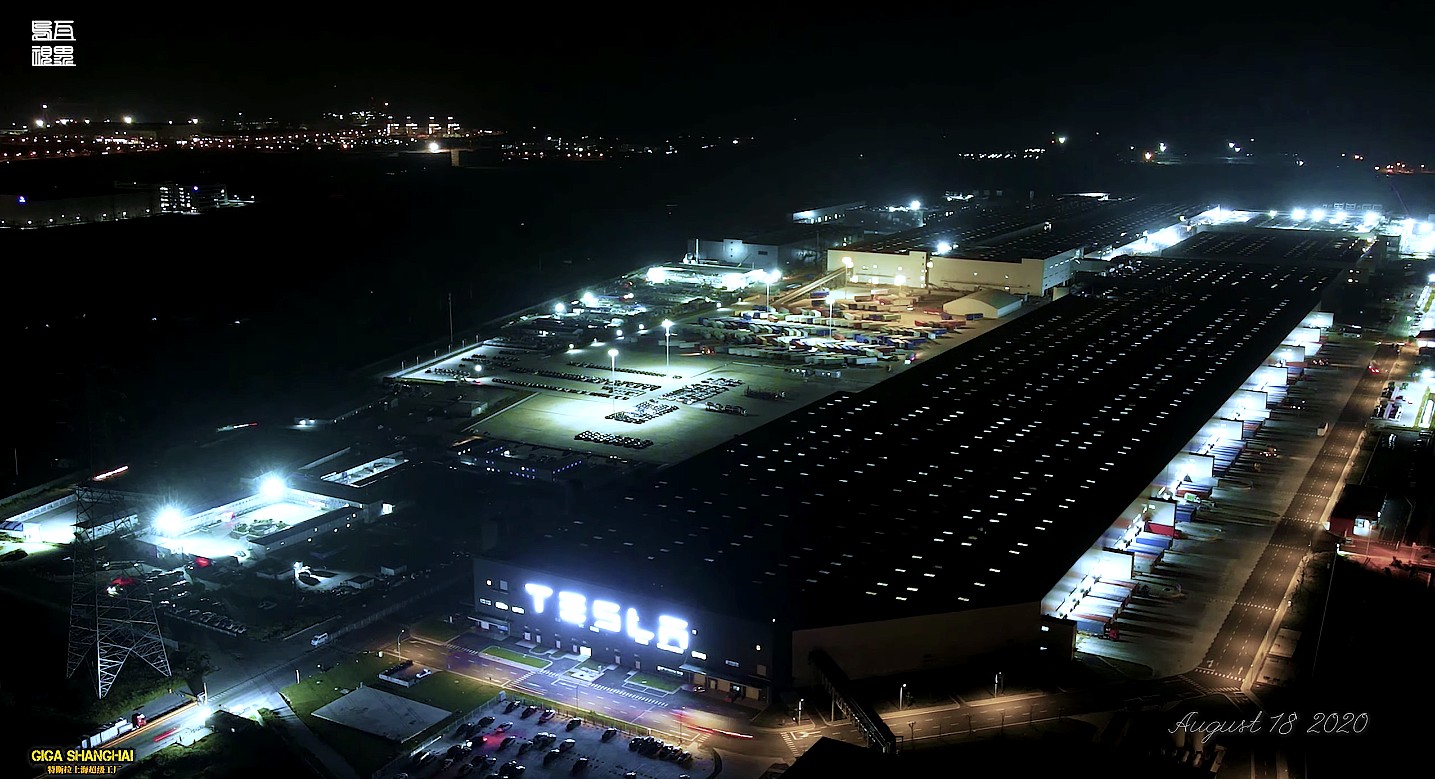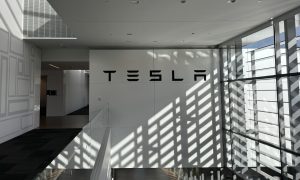

Investor's Corner
Ex-Goldman CIO slams Tesla coverage that cited TSLAQ points on S&P 500 inclusion
After four profitable quarters, expectations are high that Tesla (NASDAQ:TSLA) will be included in the S&P 500. The electric car maker posted four profitable quarters as of Q2 2020, effectively meeting the requirements to be included in the esteemed index. Yet if a recent article on Bloomberg was any indication, there are allegedly doubts about Tesla’s eligibility to be included in the S&P 500.
Citing points from DataTrek Research, Bloomberg noted that there are doubts about whether Tesla has really qualified for the index. According to the article, doubts are likely present due to the company’s profits being tied to the sale of regulatory credits. Nicholas Colas, DataTrek’s co-founder, argued that if these credits were not counted, then Tesla would not be able to post its profitable quarters, since the money the company earns from its core business is simply too “skimpy” or “volatile.”
“This puts the S&P committee in charge of adding names to the 500 in a real bind, because while to the letter of their ‘law’ Tesla qualifies for inclusion this is purely due to regulatory arbitrage — not fundamental profitability from designing, manufacturing and selling cars,” Colas argued.
I told the reporter her article presents a fringe view of what S&P may or may not be thinking, painted by the $TSLAQ community. The view is not supported by any research. Had the Fremont plant not been shut down for 8 weeks, $tsla would have made a profit w/o reg credits.— Gary Black (@garyblack00) August 25, 2020
The points outlined in the recent Bloomberg piece were called out by former Equities Goldman Sachs Asset Mgmt CIO Gary Black, who penned a letter explaining how the article misses a number of key points behind Tesla’s profitable quarters. Black, who has also served as the CEO of Aegon Asset Mgmt US, the Co-CIO of Calamos, and the CEO/CIO of Janus Capital Group, admonished the publication for essentially parroting TSLAQ talking points. According to Black, doubts about the electric car maker’s regulatory credit earnings only represent a niche view, especially this relation to the electric car maker’s possible inclusion into the S&P 500.
“Your Tesla story and headline today is at best one-sided and at worst, irresponsible. It presents a fringe view of what S&P is likely thinking, painted by the TSLAQ short community that has been trying to get a journalist to champion this view for weeks. You could have at least offered the mainstream view of what investors are thinking, consistent with the sharp rise in the Tesla stock price over the past two weeks.
“Tesla delivered a profitable 2Q in the midst of the worst economic downturn in 70 years, even with its main factory in Fremont, CA shut down for 8 of the 13 weeks of the quarter because of COVID19. If the Fremont Factory had been allowed to stay open, Tesla would have easily turned a profit without any regulatory credits. The rest of the auto industry lost $10B in 2Q. That Tesla was able to eke out a profit despite this backdrop is likely a feat S&P will find extraordinary. To say that this issue puts the S&P in a real bind in deciding on whether Tesla should be included in the S&P 500 is unsupported by research, and is almost certainly false.”
Please see attached email I sent to the Bloomberg reporter, who is severely misinformed. $tsla $tslaq https://t.co/4DjTYEr2aU pic.twitter.com/BBpyitfhaN— Gary Black (@garyblack00) August 25, 2020
Tesla Chief Finance Officer Zachary Kirkhorn has noted that he expects revenue from regulatory credits to roughly double this year. That being said, the company is also well aware that earnings from regulatory credits will only last as long as other automakers refuse to go all-in on zero-emissions transportation. As for the S&P itself, the index has been quite silent about Tesla, with S&P Dow Jones spokesman Ray McConville declining to issue a comment on Bloomberg’s article. Tesla has also remained quite silent about the subject.
Disclosure: I have no ownership in shares of TSLA and have no plans to initiate any positions within 72 hours.
Investor's Corner
Tesla could save $2.5B by replacing 10% of staff with Optimus: Morgan Stanley
Jonas assigned each robot a net present value (NPV) of $200,000.

Tesla’s (NASDAQ:TSLA) near-term outlook may be clouded by political controversies and regulatory headwinds, but Morgan Stanley analyst Adam Jonas sees a glimmer of opportunity for the electric vehicle maker.
In a new note, the Morgan Stanley analyst estimated that Tesla could save $2.5 billion by replacing just 10% of its workforce with its Optimus robots, assigning each robot a net present value (NPV) of $200,000.
Morgan Stanley highlights Optimus’ savings potential
Jonas highlighted the potential savings on Tesla’s workforce of 125,665 employees in his note, suggesting that the utilization of Optimus robots could significantly reduce labor costs. The analyst’s note arrived shortly after Tesla reported Q2 2025 deliveries of 384,122 vehicles, which came close to Morgan Stanley’s estimate and slightly under the consensus of 385,086.
“Tesla has 125,665 employees worldwide (year-end 2024). On our calculations, a 10% substitution to humanoid at approximately ($200k NPV/humanoid) could be worth approximately $2.5bn,” Jonas wrote, as noted by Street Insider.
Jonas also issued some caution on Tesla Energy, whose battery storage deployments were flat year over year at 9.6 GWh. Morgan Stanley had expected Tesla Energy to post battery storage deployments of 14 GWh in the second quarter.
Musk’s political ambitions
The backdrop to Jonas’ note included Elon Musk’s involvement in U.S. politics. The Tesla CEO recently floated the idea of launching a new political party, following a poll on X that showed support for the idea. Though a widely circulated FEC filing was labeled false by Musk, the CEO does seem intent on establishing a third political party in the United States.
Jonas cautioned that Musk’s political efforts could divert attention and resources from Tesla’s core operations, adding near-term pressure on TSLA stock. “We believe investors should be prepared for further devotion of resources (financial, time/attention) in the direction of Mr. Musk’s political priorities which may add further near-term pressure to TSLA shares,” Jonas stated.
Investor's Corner
Two Tesla bulls share differing insights on Elon Musk, the Board, and politics
Two noted Tesla bulls have shared differing views on the recent activities of CEO Elon Musk and the company’s leadership.

Two noted Tesla (NASDAQ:TSLA) bulls have shared differing views on the recent activities of CEO Elon Musk and the company’s leadership.
While Wedbush analyst Dan Ives called on Tesla’s board to take concrete steps to ensure Musk remains focused on the EV maker, longtime Tesla supporter Cathie Wood of Ark Invest reaffirmed her confidence in the CEO and the company’s leadership.
Ives warns of distraction risk amid crucial growth phase
In a recent note, Ives stated that Tesla is at a critical point in its history, as the company is transitioning from an EV maker towards an entity that is more focused on autonomous driving and robotics. He then noted that the Board of Directors should “act now” and establish formal boundaries around Musk’s political activities, which could be a headwind on TSLA stock.
Ives laid out a three-point plan that he believes could ensure that the electric vehicle maker is led with proper leadership until the end of the decade. First off, the analyst noted that a new “incentive-driven pay package for Musk as CEO that increases his ownership of Tesla up to ~25% voting power” is necessary. He also stated that the Board should establish clear guidelines for how much time Musk must devote to Tesla operations in order to receive his compensation, and a dedicated oversight committee must be formed to monitor the CEO’s political activities.
Ives, however, highlighted that Tesla should move forward with Musk at its helm. “We urge the Board to act now and move the Tesla story forward with Musk as CEO,” he wrote, reiterating its Outperform rating on Tesla stock and $500 per share price target.
Tesla CEO Elon Musk has responded to Ives’ suggestions with a brief comment on X. “Shut up, Dan,” Musk wrote.
Cathie Wood reiterates trust in Musk and Tesla board
Meanwhile, Ark Investment Management founder Cathie Wood expressed little concern over Musk’s latest controversies. In an interview with Bloomberg Television, Wood said, “We do trust the board and the board’s instincts here and we stay out of politics.” She also noted that Ark has navigated Musk-related headlines since it first invested in Tesla.
Wood also pointed to Musk’s recent move to oversee Tesla’s sales operations in the U.S. and Europe as evidence of his renewed focus in the electric vehicle maker. “When he puts his mind on something, he usually gets the job done,” she said. “So I think he’s much less distracted now than he was, let’s say, in the White House 24/7,” she said.
TSLA stock is down roughly 25% year-to-date but has gained about 19% over the past 12 months, as noted in a StocksTwits report.
Investor's Corner
Cantor Fitzgerald maintains Tesla (TSLA) ‘Overweight’ rating amid Q2 2025 deliveries
Cantor Fitzgerald is holding firm on its bullish stance for the electric vehicle maker.

Cantor Fitzgerald is holding firm on its bullish stance for Tesla (NASDAQ: TSLA), reiterating its “Overweight” rating and $355 price target amidst the company’s release of its Q2 2025 vehicle delivery and production report.
Tesla delivered 384,122 vehicles in Q2 2025, falling below last year’s Q2 figure of 443,956 units. Despite softer demand in some countries in Europe and ongoing controversies surrounding CEO Elon Musk, the firm maintained its view that Tesla is a long-term growth story in the EV sector.
Tesla’s Q2 results
Among the 384,122 vehicles that Tesla delivered in the second quarter, 373,728 were Model 3 and Model Y. The remaining 10,394 units were attributed to the Model S, Model X, and Cybertruck. Production was largely flat year-over-year at 410,244 units.
In the energy division, Tesla deployed 9.6 GWh of energy storage in Q2, which was above last year’s 9.4 GWh. Overall, Tesla continues to hold a strong position with $95.7 billion in trailing twelve-month revenue and a 17.7% gross margin, as noted in a report from Investing.com.
Tesla’s stock is still volatile
Tesla’s market cap fell to $941 billion on Monday amid volatility that was likely caused in no small part by CEO Elon Musk’s political posts on X over the weekend. Musk has announced that he is forming the America Party to serve as a third option for voters in the United States, a decision that has earned the ire of U.S. President Donald Trump.
Despite Musk’s controversial nature, some analysts remain bullish on TSLA stock. Apart from Cantor Fitzgerald, Canaccord Genuity also reiterated its “Buy” rating on Tesla shares, with the firm highlighting the company’s positive Q2 vehicle deliveries, which exceeded its expectations by 24,000 units. Cannacord also noted that Tesla remains strong in several markets despite its year-over-year decline in deliveries.
-

 Elon Musk1 week ago
Elon Musk1 week agoTesla investors will be shocked by Jim Cramer’s latest assessment
-

 Elon Musk20 hours ago
Elon Musk20 hours agoxAI launches Grok 4 with new $300/month SuperGrok Heavy subscription
-

 Elon Musk3 days ago
Elon Musk3 days agoElon Musk confirms Grok 4 launch on July 9 with livestream event
-

 News7 days ago
News7 days agoTesla Model 3 ranks as the safest new car in Europe for 2025, per Euro NCAP tests
-

 Elon Musk2 weeks ago
Elon Musk2 weeks agoA Tesla just delivered itself to a customer autonomously, Elon Musk confirms
-

 Elon Musk1 week ago
Elon Musk1 week agoxAI’s Memphis data center receives air permit despite community criticism
-

 Elon Musk2 weeks ago
Elon Musk2 weeks agoTesla’s Omead Afshar, known as Elon Musk’s right-hand man, leaves company: reports
-

 News2 weeks ago
News2 weeks agoXiaomi CEO congratulates Tesla on first FSD delivery: “We have to continue learning!”
















